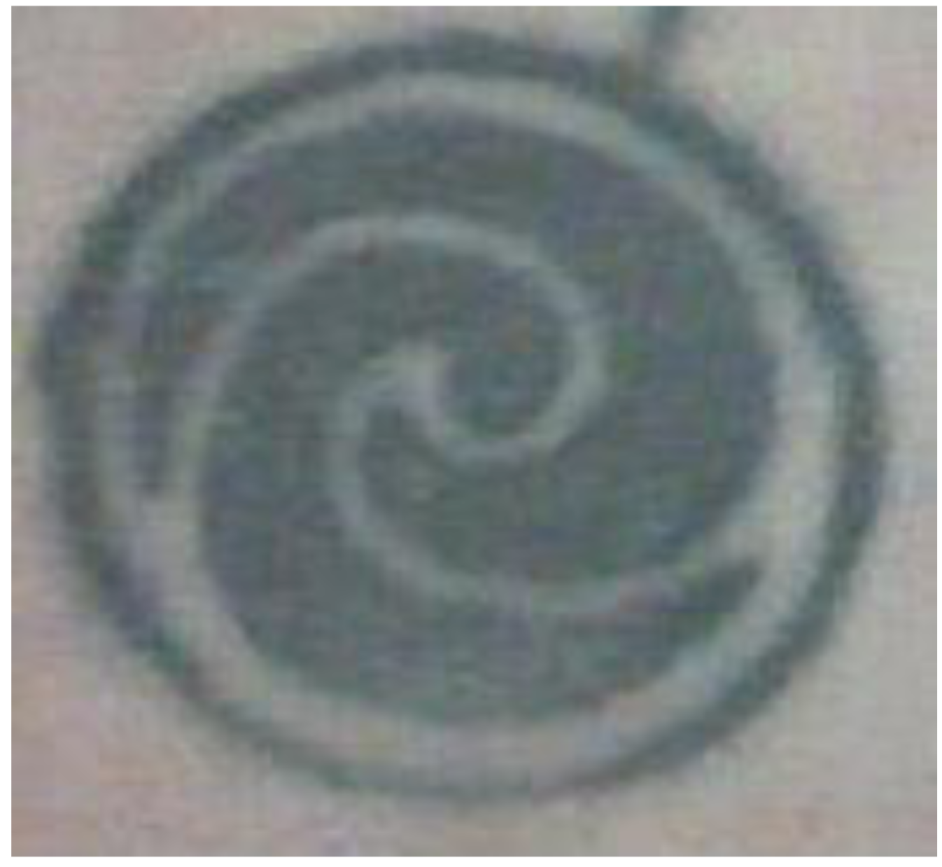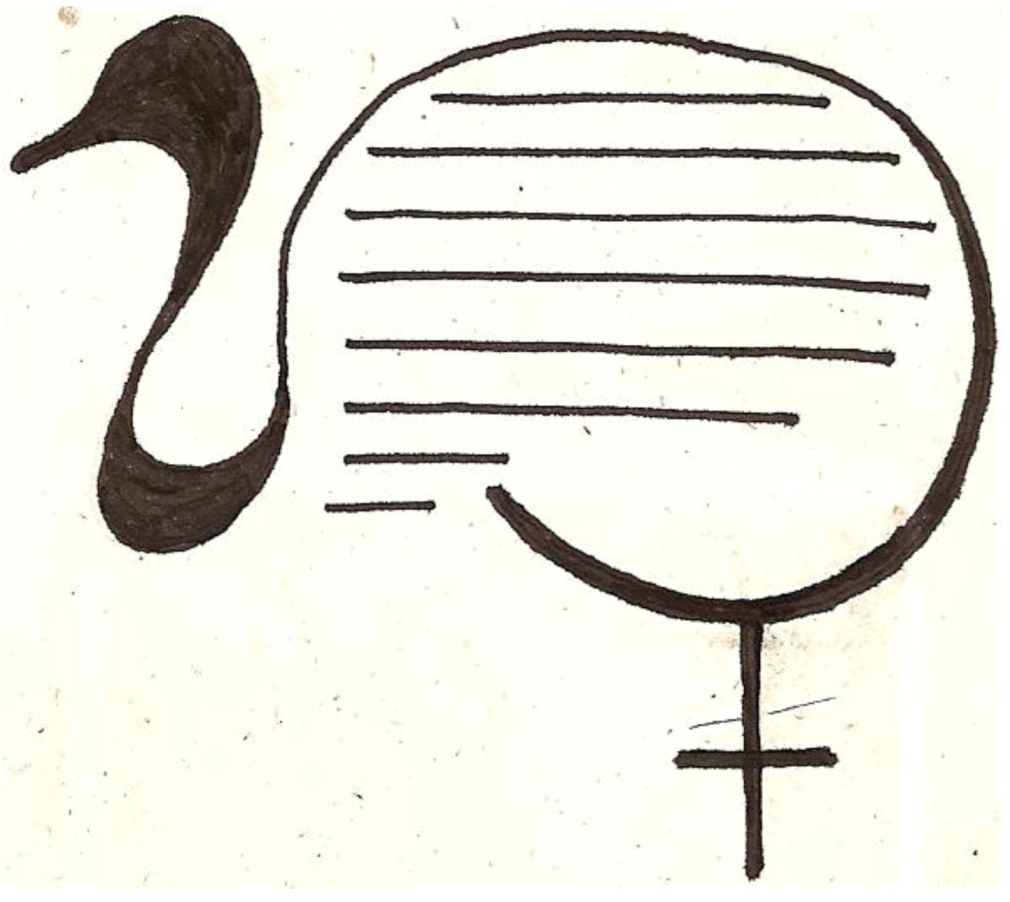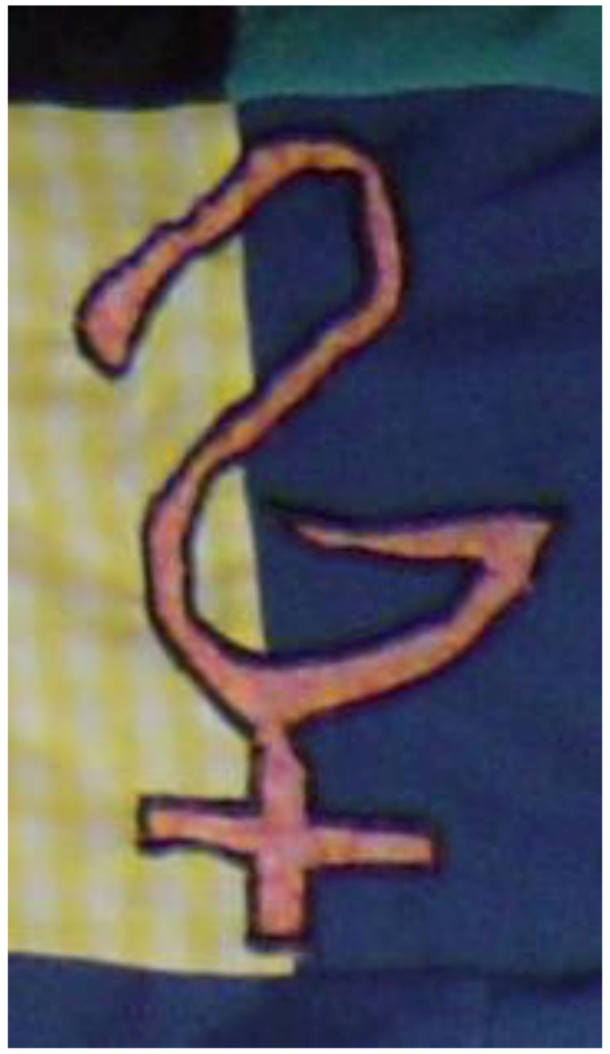Cultural Models of Bodily Images of Women Teachers
Abstract
:1. Introduction
2. Theoretical Frame
2.1. Cultural Models and Situated Meanings
2.2. Cultural Models and Situated Meanings of Teacher
3. Women Teachers’ Bodies

4. Methodology
5. Findings
5.1. A Story from Erin

- Part 3. Reading Tattoos
- I. EVALUATION
- Stanza J. Identifying with her body as text
- J1. and actually I think it is really interesting because it is
- J2. it is me making my body the text
- J3. it’s like read me read that this happened to me
- II. CRISIS
- Stanza K. Abstract
- K1. um and and students always notice my tattoos
- K2. they always do
- III. SETTING
- Stanza L. When students read tattoos
- L1. it’s not immediate usually um
- L2. it’s usually a couple months in
- IV. CRISIS
- Stanza M. Students notice tattoos
- M1. but they're like •(gasp) you have a tattoo …
- V. EVALUATION
- Stanza N. Moving categories
- N1. you’re like all of a sudden you get placed in this different category
- N2. you know like you’re not the teacher that they shove in the closet every night and take the battery out of you know
- VI. RESOLUTION
- Stanza O. Students ask about meaning
- O1. and um so yeah so and
- O2. and obviously kids have always asked like what is that and I [say] Polynesian wave symbol that’s it //
5.2. A Story from Gabbie


- IV. EVALUATION
- IV. F. Understandings of persons in the class
- F1. And [Karen] pulls this quilt out
- F2. and on this quilt I swear to god there were TEN panels
- F3. and on each panel it symbolized how she saw the person in the class
- F4. and we had one guy that took the class
- F5. so for his it was like a lacrosse stick and I forget the other thing
- F6. so she like had a camera and a running shoe for Dana
- F7. and like a soccer ball and skis for Jan
- F8. and for me she had like this design
- F9. that actually ended up becoming a tattoo::o that I got
- F10. actually
- F11. it’s like this ah it’s this graphic symbol
- F12. with a woman symbol and a swan
- F13. that my friend designed
- F14. it was really cool um
- V. RESOLUTION
- Stanza F. Emotional connection
- F1. and at the very END she gave me the quilt
- F2. and I was BAWLING
- F3. I was like this is aMAZing
- VI. CODA
- Stanza G. Quilt in personal space
- G1. and the quilt still hangs like in my apartment to this day//

5.3. Summary
6. Discussion
Appendix
| Notation | Explanation |
|---|---|
| Part 1. Part Label | Part number with bold upper and lower case print indicated the label of the part and is similar to a title for the narrative. |
| II. SECTION | Roman numeral and bold capitalized print indicates macrostructure section of narrative. |
| Stanza A. Description | Stanza letter with bold label with the first letter capitalized indicates the purpose or topic of the data clump in the narrative. |
| A1. | Capital letter and number indicates the stanza and line number spoken by the participant. |
| C: | Indented, italicized capital letter C and colon indicates the researcher Christine is speaking. |
| // | Double slash marks indicate the voice has a pitch that sounds final. |
| word | Underline indicates stressed word or word segment |
| WORD | Capitalized word or word segment indicates an emphatic tone |
| .. | Double periods indicates a pause. |
| :: | Repeated colons indicates elongated sound; the longer the row of colons, the longer the sound. |
| ( ) | Parentheses indicate an action or sound, such as (clears throat) or inaudible speech recorded as accurately as possible. |
| ↑ | Sound has a rising intonation compared to the pitch that came before. |
| ↓ | Sound has a falling intonation compared to the pitch that came before. |
| ◦word◦ | Degree signs indicate quieter speech |
References
- Gee, J.P. Social Linguistics and Literacies: Ideology in Discourses, 2nd ed; RoutledgeFarmer: Oxford, UK, 1996. [Google Scholar]
- Cultural Models in Language and Thought; Holland, D.; Quinn, N. (Eds.) Cambridge University Press: Cambridge, UK, 1987.
- Gee, J.P. An Introduction to Discourse Analysis: Theory and Method, 2nd ed; Routledge: London, UK, 1999. [Google Scholar]
- Cooks, L.; LeBesco, K. Introduction and the pedagogy of the teacher’s body. Rev. Educ. Pedagog. Cult. Stud. 2006, 28, 233–238. [Google Scholar]
- Pitts, V.L. In the Flesh: The Cultural Politics of Body Modification; Palgrave MacMillan: New York, NY, USA, 2003. [Google Scholar]
- Gee, J.P. An Introduction to Discourse Analysis: Theory and Method, 3rd ed; Routledge: New York, NY, USA, 2011. [Google Scholar]
- Holland, D.; Skinner, D.; Lachiotte, W.; Cain, C. Identity and Agency in Cultural Worlds; Harvard University Press: Cambridge, MA, USA, 1998. [Google Scholar]
- Foucault, M. The Archaeology of Knowledge: And the Discourse on Language; A.M.S. Smith, Trans.; Pantheon Books: New York, NY, USA, 1972. [Google Scholar]
- Dalton, M. The Hollywood Curriculum: Teachers in the Movies; Peter Lang: New York, NY, USA, 2004. [Google Scholar]
- Grumet, M. Bitter Milk: Women and Teaching; The University of Massachusetts Press: Amherst, MA, USA, 1988. [Google Scholar]
- Strizek, G.A.; Pittsonberger, J.L.; Riordan, K.E.; Lyter, D.M.; Orlofsky, G.F. Characteristics of Schools, Districts, Teachers, Principals, and School Libraries in the United States: 2003–2004 Schools and Staffing Survey (NCES 2006-313 Revised); U.S. Government Printing Office: Washington, DC, USA, 2006. [Google Scholar]
- Zumwalt, K.; Craig, E. Teachers’ characteristics: Research on the demographic profile. In Studying Teacher Education: The Report of the AERA Panel on Research and Teacher Education; Cochran-Smith, M., Zeichner, K.M., Eds.; Erlbaum: Mahwah, NJ, USA, 2005; pp. 111–156. [Google Scholar]
- Alsup, J. Teacher Identity Discourses: Negotiating Personal and Professional Spaces; Erlbaum: Mahwah, NJ, USA, 2006. [Google Scholar]
- Donovan, F.R. The Schoolma’am; Arno Press: New York, NY, US, 1974. [Google Scholar]
- Beecher, C.E. The Evils Suffered by American Women and American Children: The Causes and the Remedy; Harper & Brothers: New York, NY, USA, 1846. [Google Scholar]
- Lortie, D.C. Schoolteacher: A Sociological Study; The University of Chicago: Chicago, IL, USA, 2002. [Google Scholar]
- Biklen, S.K. School Work: Gender and the Cultural Construction of Teaching; Teachers College Press: New York, NY, USA, 1995. [Google Scholar]
- Waller, W. The Sociology of Teaching; John Wiley & Sons: New York, NY, USA, 1965. [Google Scholar]
- Atkinson, B. Apple jumper, teacher babe, and bland uniformer teachers: Fashioning feminine teacher bodies. Educ. Stud. 2008, 44, 98–121. [Google Scholar]
- Barker, O. Schools enforce dress codes—for teachers. USA Today 2003, 6d. [Google Scholar]
- Johnson, T. Performing a/sexual teacher: The Cartesian duality in education. Rev. Educ. Pedagog. Cult. Stud. 2006, 28, 253–266. [Google Scholar] [CrossRef]
- MacLure, M. Discourse in Educational and Social Research; Open University Press: Buckingham, UK, 2003. [Google Scholar]
- Weber, S.; Mitchell, C. That’s Funny, You don’t Look like a Teacher! Interrogating Images and Identity in Popular Culture; Falmer Press: London, UK, 1995. [Google Scholar]
- Kilbourne, J. (Creator); Jhally, S. (Producer) Killing us Softly 3: Advertising's Image of Women [Motion Picture]. Available from Media Education Foundation, 60 Masonic Street, Northampton, MA 01060, 2000.
- Sawicki, J. Disciplining Foucault: Feminism, Power, and the Body; Routledge: New York, NY, USA, 1991. [Google Scholar]
- Lightfoot, S.L. Worlds Apart: Relationships between Families and Schools; Basic Books: New York, NY, USA, 1978. [Google Scholar]
- Foucault, M. Discipline and Punish: The Birth of the Prison; A. Sheridan, Trans.; Vintage Books: New York, NY, USA, 1977. [Google Scholar]
- de Lauretis, T. Alice doesn’t: Feminism, Semiotics, Cinema; Indiana University Press: Bloomington, IN, USA, 1984. [Google Scholar]
- Bordo, S. Unbearable Weight: Feminism, Western Culture, and the Body; University of California Press: Berkeley, CA, USA, 1993. [Google Scholar]
- Riessman, C.K. Narrative Analysis; Sage: Newbury Park, CA, USA, 1993. [Google Scholar]
- Riessman, C.K. Narrative Methods for the Human Sciences; Sage: Los Angeles, CA, USA, 2008. [Google Scholar]
- Oakley, A. Interviewing women: A contradiction in terms. In Doing Feminist Research; Roberts, H., Ed.; Routledge: London, UK, 1981; pp. 30–61. [Google Scholar]
- Reinharz, S. Feminist methods in social research; Oxford University: New York, NY, USA, 1992. [Google Scholar]
- Personal Narratives Group, Interpreting Women’s Lives: Feminist Theory and Personal Narratives; Indiana University Press: Bloomington, IN, USA, 1989.
- Ome, J. “You will always have to out yourself”: Reconsidering coming out through strategic outness. Sexualities 2010, 14, 681–703. [Google Scholar]
- Gee, J.P. A linguistic approach to narrative. J. Narrative Life Hist. 1991, 1, 15–39. [Google Scholar]
- Jefferson, G. Glossary of transcript symbols with an introduction. In Conversation Analysis: Studies from the First Generation; Lerner, G.H., Ed.; John Benjamins: Amsterdam, The Netherlands, 2004; pp. 13–31. [Google Scholar]
- Rose, G. Visual Methodologies: An Introduction to the Interpretation of Visual Materials; Sage: London, UK, 2001. [Google Scholar]
- Lenhart, A.; Madden, M.; Macgill, A.R.; Smith, A. Teens and Social Media: The Use of Social Media Gains a Greater Foothold in Teen Life as They Embrace the Conversational Nature of Interactive Online Media. Available online: http://www.pewinternet.org/Reports/2007/Teens-and-Social-Media.aspx (accessed on 25 October 2012).
- Obrycki, L. Professionalism: What it means for a new teacher. In 2009 Job Search Handbook for Educators; American Association for Employment in Education: Columbus, OH, USA, 2008; p. 9. [Google Scholar]
- Lightfoot, S. Lives of teachers. In Handbook of Teaching and Policy; Shulman, L., Sykes, G., Eds.; Longman: New York, NY, USA, 1983; pp. 241–260. [Google Scholar]
© 2012 by the authors; licensee MDPI, Basel, Switzerland. This article is an open-access article distributed under the terms and conditions of the Creative Commons Attribution license (http://creativecommons.org/licenses/by/3.0/).
Share and Cite
Mallozzi, C.A. Cultural Models of Bodily Images of Women Teachers. Societies 2012, 2, 252-269. https://doi.org/10.3390/soc2040252
Mallozzi CA. Cultural Models of Bodily Images of Women Teachers. Societies. 2012; 2(4):252-269. https://doi.org/10.3390/soc2040252
Chicago/Turabian StyleMallozzi, Christine A. 2012. "Cultural Models of Bodily Images of Women Teachers" Societies 2, no. 4: 252-269. https://doi.org/10.3390/soc2040252




